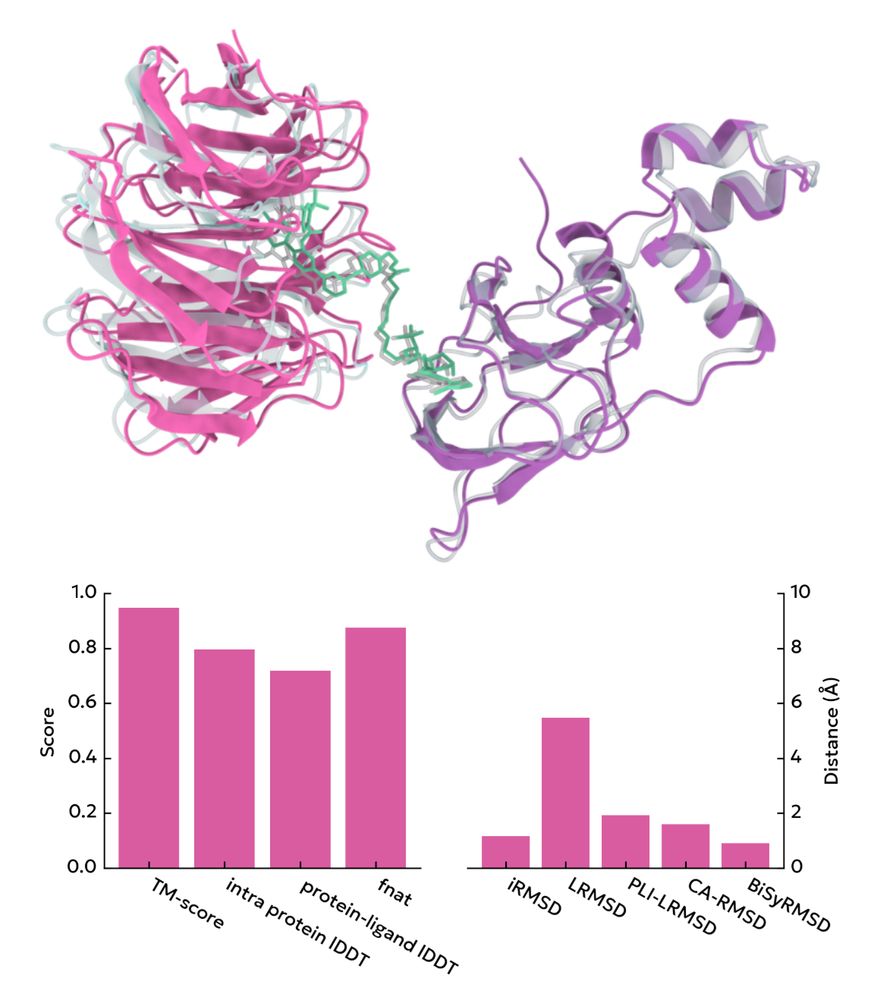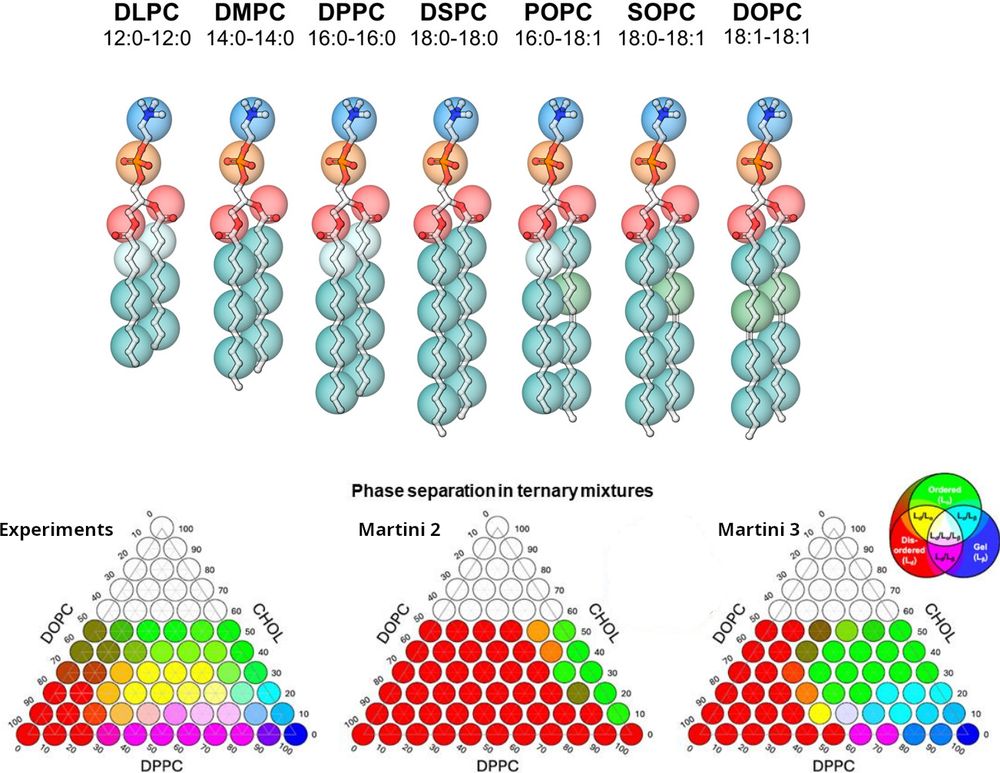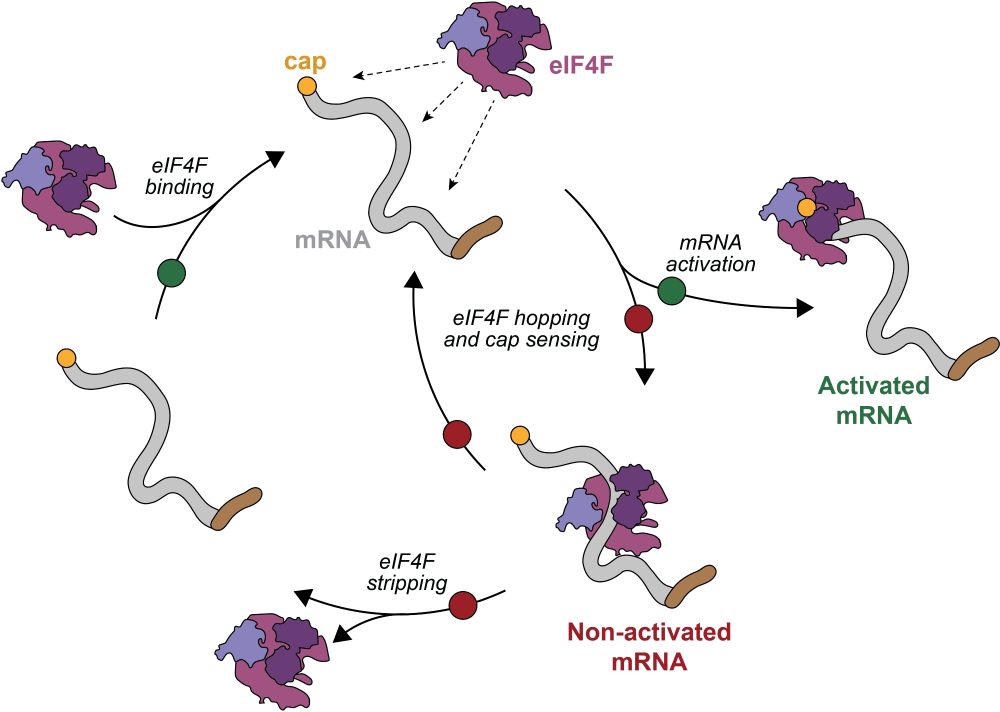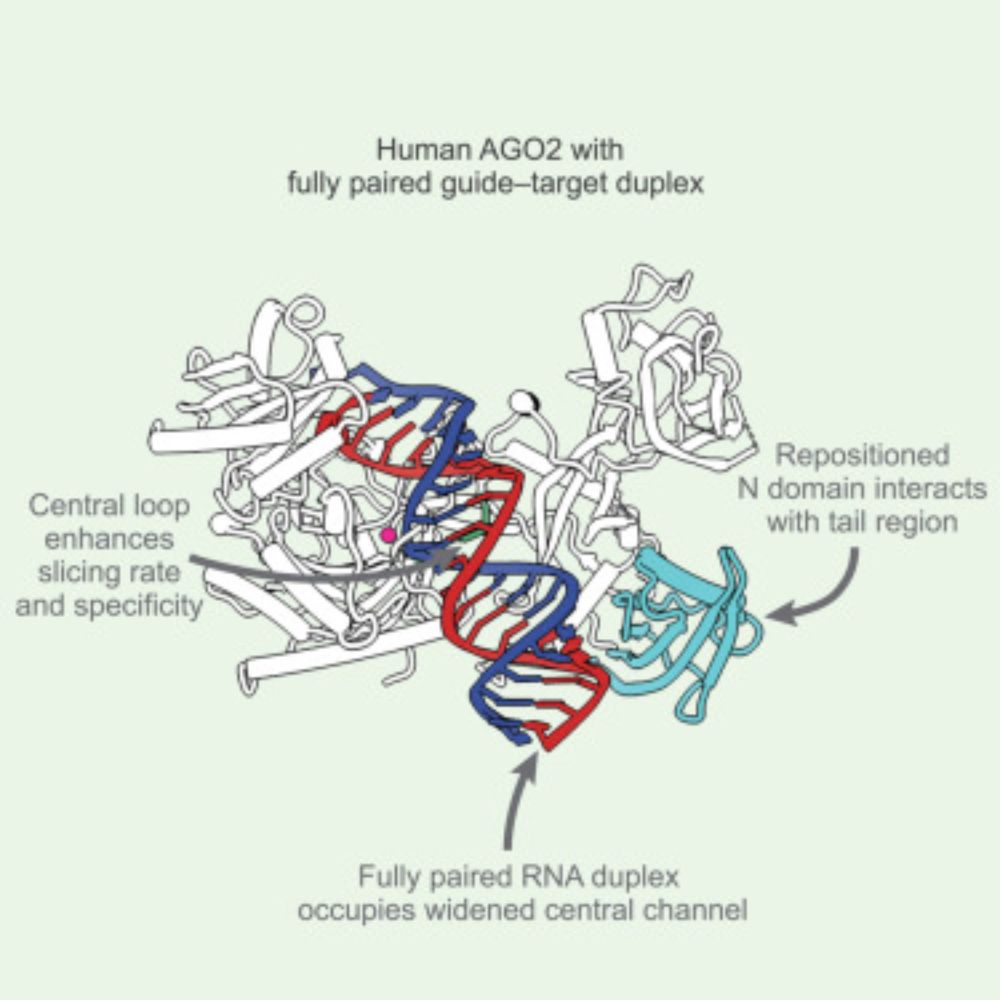
The GBM Compact - Focus on Condensate Biology poster session has 5 winners: Miriam Linsenmeier (FEBS Open Bio award), Patrick McCall and Michal Kacper Bialobrzewski (sponsored by De Gruyter Brill). Two book vouchers from Wiley were awarded to Saskia Hutten and Nora Haanaes! Congratulations!
22.09.2025 13:18 — 👍 7 🔁 3 💬 0 📌 2

Screencap from the homepage showing various structural similarity metrics between a pose and a reference structure
A single python package for calculation of quality metrics like DockQ, LDDT, RMSD, & others
peppr.vant.ai
04.04.2025 06:32 — 👍 74 🔁 20 💬 3 📌 0

Accurate prediction of thermoresponsive phase behavior of disordered proteins
Protein responses to environmental stress, particularly temperature fluctuations, have long been a subject of investigation, with a focus on how proteins maintain homeostasis and exhibit thermoresponsive properties. While UCST-type (upper critical solution temperature) phase behavior has been studied extensively and can now be predicted reliably using computational models, LCST-type (lower critical solution temperature) phase transitions remain less explored, with a lack of computational models capable of accurate prediction. This gap limits our ability to probe fully how proteins undergo phase transitions in response to temperature changes. Here, we introduce Mpipi-T, a residue-level coarse-grained model designed to predict LCST-type phase behavior of proteins. Parametrized using both atomistic simulations and experimental data, Mpipi-T accounts for entropically driven protein phase separation that occurs upon heating. Accordingly, Mpipi-T predicts temperature-driven protein behavior quantitatively in both single- and multi-chain systems. Beyond its predictive capabilities, we demonstrate that Mpipi-T provides a framework for uncovering the molecular mechanisms underlying heat stress responses, offering new insights into how proteins sense and adapt to thermal changes in biological systems. ### Competing Interest Statement The authors have declared no competing interest.
Our work helps bridge the gap between fundamental biophysics and real-world applications. Want to learn more? Read @jerelleaj.bsky.social and my new preprint on BioRXiv! biorxiv.org/content/10.1... 📖 (4/4)
06.03.2025 20:44 — 👍 10 🔁 3 💬 0 📌 0
This is a massive public health and educational crisis, and we (scientists and journalist) need to help people make sense of it. Rapidly. Get your frames together people. Start sharing them in any way you can.
08.02.2025 01:36 — 👍 562 🔁 93 💬 9 📌 1


🚨 Revolutionising Snakebite Treatments with AI-Designed Proteins 🐍
I'm proud to share our latest study published in hashtag#Nature, driven by Susana Vazquez Torres, and co-led by David Baker (Institute for Protein Design, University of Washington) and myself.
15.01.2025 20:16 — 👍 27 🔁 11 💬 2 📌 2
Kartvelo,Kheli Khmals Ikar 💪
28.12.2024 21:01 — 👍 0 🔁 0 💬 0 📌 0

Excited to announce the release of our preprint, "The Martini 3 Lipidome: Expanded and Refined Parameters Improve Lipid Phase Behavior", now available on @chemrxiv.bsky.social
👉 Read the full preprint here: chemrxiv.org/engage/chemr...
26.12.2024 13:47 — 👍 56 🔁 14 💬 3 📌 2

Debunked dogma: disordered proteins disregard ligands’ chirality
Understanding unfolded proteins could boost drug discovery and decipher origins of life mysteries
Debunked dogma: disordered proteins disregard ligands’ chirality 🧬 my latest story for @chemistryworld.bsky.social on a fantastic and surprising Nature paper by Johan Olsen and Birthe Kragelund teams 🇩🇰 Read more below! #realtimechem #chemsky 🧪 www.chemistryworld.com/news/debunke...
18.12.2024 11:43 — 👍 80 🔁 13 💬 2 📌 2

AlphaFold3 still tends to overfit regions that AF2 multimer predicts to be disordered. Almost all disordered regions become helices in AF3.
15.12.2024 02:03 — 👍 55 🔁 20 💬 1 📌 2

Our latest work is out in Nature today! Using smFRET, we directly visualized recruitment of the eIF4F complex to the 5' cap of eukaryotic mRNAs and formation of an activated mRNA. Our findings reveal new and surprising roles for each eIF4F component. 1/3 www.nature.com/articles/s41...
11.12.2024 21:35 — 👍 171 🔁 55 💬 11 📌 4
Congratulations @guyteichman.bsky.social et al!!
05.12.2024 22:22 — 👍 3 🔁 3 💬 0 📌 0
EMBO is the organization of more than 2,100 leading researchers that promotes excellence in life sciences in Europe and beyond.
https://www.embo.org/
German scientific society for all those interested in biochemistry, molecular biology, biomedicine, biotechnology, cell biology, genetics...
Comp bio postdoc @ IRB Barcelona. The voice behind Phase Space Invaders, the keystrokes behind Gromologist, the molecular cameraman behind Molywood. 🇵🇱❤️🇺🇦
Chem & Bio Eng, Mat Sci Joint PhD Candidate @Princeton | B.S. Molecular Eng @UChicago '22 | biomolecular condensates + computer simulations | DEI and STEM outreach
microbiologist. entomologist. immunologist. Lover of science, especially at its intersections. Asst Prof of Biology at Johns Hopkins. @nabroderick elsewhere.
Study genetic conflicts professionally. Try to avoid conflicts in personal life (with mixed results).
Fred Hutch Basic Sciences,
UW Genome Sciences,
HHMI.
Posting in a personal capacity. My posts don’t reflect my employers’ opinions.
Science news from the medical university Karolinska Institutet (KI) in Sweden. Our vision is to advance knowledge about life and strive towards better health for all. https://ki.se/
Officiel profil for Københavns Universitet (oprettet af @kristiangranov.bsky.social for verificering) [inaktiv]
We are a research and innovation center in Copenhagen connected to University of Copenhagen. We aim to advance research, discover new disease-related genes, and translate findings into treatments.
🔗 bric.ku.dk
📍 Copenhagen, Denmark
Vi uddeler årligt +500 millioner kr. til danskbaseret sundhedsvidenskabelig forskning - med en forkærlighed for hjernesundhed.
An open access @natureportfolio.bsky.social journal publishing high quality primary research, reviews, and commentary in Earth, environmental, and planetary science.
nature.com/commsenv/
The multi-disciplinary engineering journal from the Nature Portfolio. Fully open access. You can read all our content here for free: https://www.nature.com/commseng/
Communications Psychology is a selective, peer reviewed, open access journal in the @natureportfolio.bsky.social, publishing high-quality research, reviews and commentary across psychology.
https://www.nature.com/commspsychol/
A Nature journal dedicated to presenting the very best research across the disciplines of astronomy, astrophysics, cosmology and planetary science.📡
www.nature.com/natastron
Publishing the latest advances across all areas of cancer research and oncology. Part of @natureportfolio.nature.com
🌐 www.nature.com/natcancer/
📍New York, London, Berlin and Heidelberg
Nature Catalysis publishes high quality work across all areas of catalysis, including both fundamental and applied studies.
https://www.nature.com/natcatal/
A scientific journal devoted to publishing the most compelling research, opinion and analysis at the intersection of chemistry and biology.
A chemistry journal published by SpringerNature
.
A new @natureportfolio.bsky.social journal publishing leading research, analysis, and commentary covering the breadth and depth of chemical engineering.
https://www.nature.com/natchemeng/










